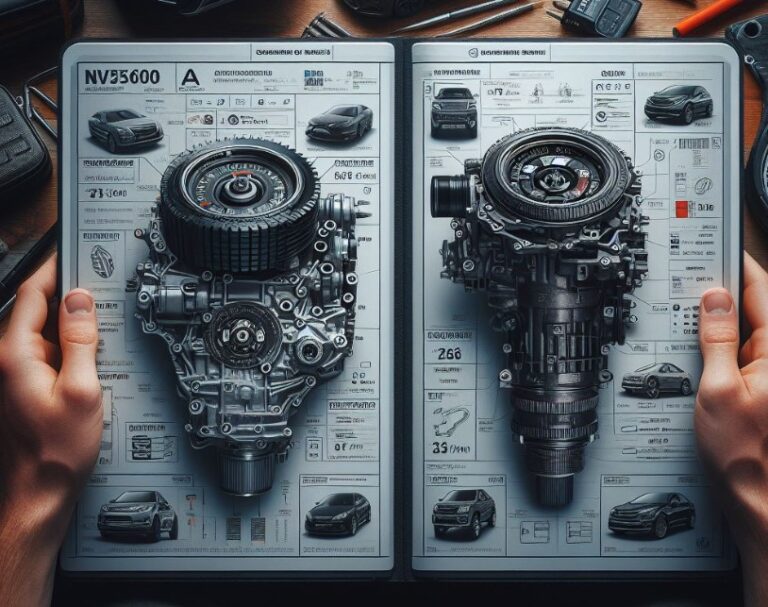How To Determine Compression Ratio Without Disassembling Engine?
Are you looking for How To Determine Compression Ratio Without Disassembling Engine? The compression ratio of an engine is a critical parameter that influences its performance, efficiency, and longevity. It’s defined as the ratio of the volume of its combustion chamber from its largest capacity to its smallest. Understanding this ratio is vital for various adjustments and troubleshooting. However, traditionally, obtaining this data requires disassembling the engine, which is not always feasible or cost-effective.
Key Takeaways
- Non-Invasive Methods: Explore techniques to calculate compression ratio without engine disassembly.
- Tools and Calculations: Learn about specific tools and formulas used in this process.
- Practical Applications: Understand the significance of compression ratio in engine performance and health.
How To Determine Compression Ratio Without Disassembling Engine?
Determining the compression ratio of an engine without disassembling it involves a series of steps that combine direct measurements and calculations. Here’s a detailed guide:

1. Gather Basic Engine Specifications
- Bore and Stroke: Find these specifications in the engine’s manual or manufacturer’s website. The bore is the diameter of the cylinder, and the stroke is the distance the piston travels.
- Head Gasket Thickness and Bore: Necessary for calculating the volume the gasket occupies.
- Combustion Chamber Volume: Often listed in engine specifications. If not, it may be estimated based on engine type and model.
2. Measure Piston Dome or Dish Volume
- Dome Pistons: Add volume to the combustion chamber and increase compression.
- Dished Pistons: Reduce volume and decrease compression.
- Measure the volume using fluid displacement or consult manufacturer specifications for these pistons.
3. Calculate Cylinder Volume
- Formula: Volume = π × (Bore/2)² × Stroke. This calculation gives the volume of the cylinder when the piston is at the bottom of its stroke.
4. Determine Head Gasket Volume
- Formula: Volume = π × (Gasket Bore/2)² × Gasket Thickness. This calculation accounts for the space the gasket occupies in the cylinder.
5. Estimate Combustion Chamber Volume
- If not provided, you can use a burette filled with a known volume of fluid to measure how much fluid it takes to fill the combustion chamber with the piston at the top dead center.
6. Consider Valve Relief Cuts
- If the pistons have valve reliefs, their volume needs to be subtracted from the total chamber volume.
7. Calculate Total Volume
- Total Volume at Bottom Dead Center (BDC): Add cylinder volume, head gasket volume, and combustion chamber volume, and adjust for piston dome/dish and valve relief cuts.
- Total Volume at Top Dead Center (TDC): Add only the head gasket volume, and combustion chamber volume, and adjust for piston dome/dish and valve relief cuts.
8. Use Compression Ratio Formula
- Formula: Compression Ratio = Total Volume at BDC / Total Volume at TDC. This gives you the engine’s compression ratio.
9. Cross-Check with a Compression Tester (Optional)
- While not necessary, using a compression tester can provide a real-world pressure reading from the cylinders, which can be compared to expected values based on the calculated compression ratio.
10. Interpret the Results
- High Compression Ratio: Indicates a more efficient but potentially knock-prone engine.
- Low Compression Ratio: This could mean an engine that’s more forgiving with fuel quality but less efficient.
Non-Invasive Methods to Determine Compression Ratio
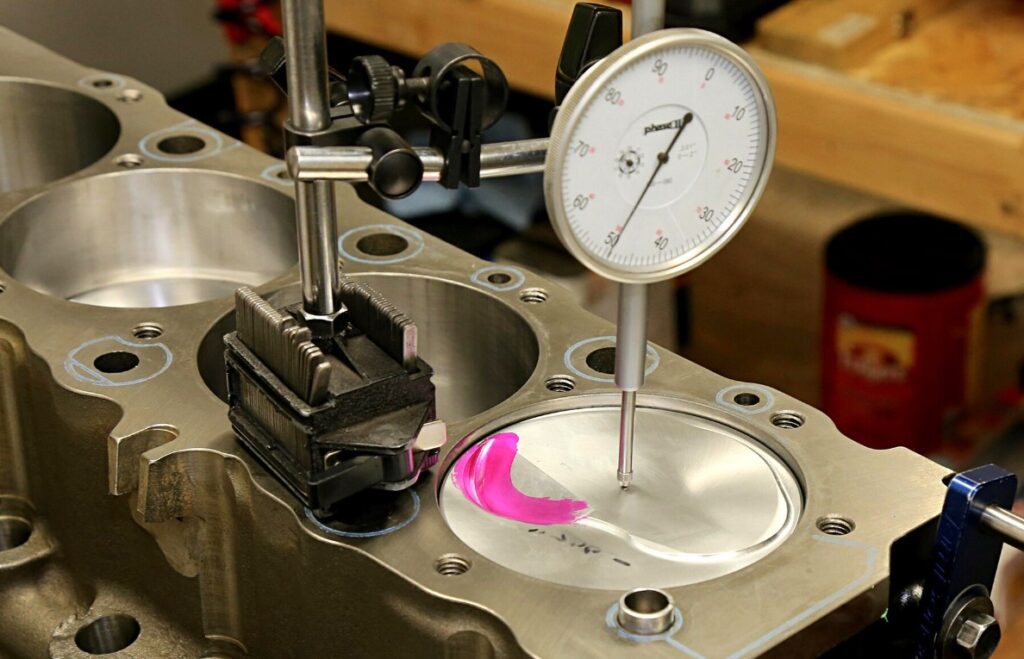
Using Pressure Gauges
A practical approach to estimating the compression ratio is through the use of pressure gauges. This method involves measuring the pressure in the combustion chamber during the compression stroke. By comparing this pressure with standard values, one can infer the compression ratio.
Applying Mathematical Formulas
Another approach involves the use of mathematical formulas. These formulas take into account various engine parameters like bore, stroke, head gasket thickness, and chamber volume. By inputting these values into specific formulas, the compression ratio can be calculated without dismantling the engine.
Importance of Knowing Compression Ratio
Engine Performance
The compression ratio directly affects engine performance. Higher ratios usually translate to better fuel efficiency and more power. However, too high a ratio can lead to issues like engine knocking.
Engine Health and Maintenance
Understanding the compression ratio helps in diagnosing engine problems and in conducting routine maintenance. It aids in making informed decisions about fuel types and in adjusting ignition timing.
Tools and Equipment Needed
Compression Testers
A compression tester is a tool that measures the pressure in the cylinder. This tool provides valuable data that can be used to estimate the compression ratio.
Calculation Tools
Various online tools and software are available that can calculate compression ratios based on entered engine parameters. These tools simplify the process and enhance accuracy.
Step-by-Step Guide to Calculating Compression Ratio
Measuring Engine Parameters
Firstly, gather all necessary engine parameters like bore, stroke, head gasket thickness, and combustion chamber volume. These can often be found in engine manuals or manufacturer’s specifications.
Using Compression Testers
Next, use a compression tester to measure the pressure in each cylinder. Record these values carefully for analysis.
Real-World Applications and Case Studies

Performance Tuning
Understanding the compression ratio is vital for tuning engines for optimal performance, especially in racing and high-performance vehicles.
Routine Engine Diagnostics
Regularly estimating the compression ratio can help in the early detection of potential engine issues, thereby reducing maintenance costs and downtime.
Advanced Techniques for Accurate Estimations
Utilizing Advanced Diagnostic Tools
Advanced diagnostic tools, such as digital compression testers and cylinder leak-down testers, offer more precise readings. These tools can detect even minor variations in compression, which can be crucial for accurate calculations.
Integrating Engine Simulation Software
Engine simulation software is a revolutionary tool in this field. By inputting engine parameters, these programs can simulate engine operations, including compression cycles, providing an in-depth analysis and accurate estimation of the compression ratio.
Impact on Fuel Efficiency and Emissions

Understanding the Correlation
The compression ratio of an engine has a significant impact on fuel efficiency. A higher ratio often means better fuel economy but also has implications for emissions. This section explores this complex relationship.
Balancing Efficiency with Environmental Considerations
Balancing fuel efficiency with environmental impact is crucial. This part discusses how understanding the compression ratio can guide adjustments to make engines more eco-friendly without sacrificing performance.
Troubleshooting Engine Issues
Compression Ratio as a Diagnostic Tool
Anomalies in the expected compression ratio can be indicative of various engine issues. This section explains how to use compression ratio readings as a diagnostic tool for common engine problems.
Case Studies: Resolving Engine Issues
Through case studies, we’ll explore real-life scenarios where understanding the compression ratio helped diagnose and resolve engine problems, emphasizing the practical application of this knowledge.
Fine-Tuning Engine Performance
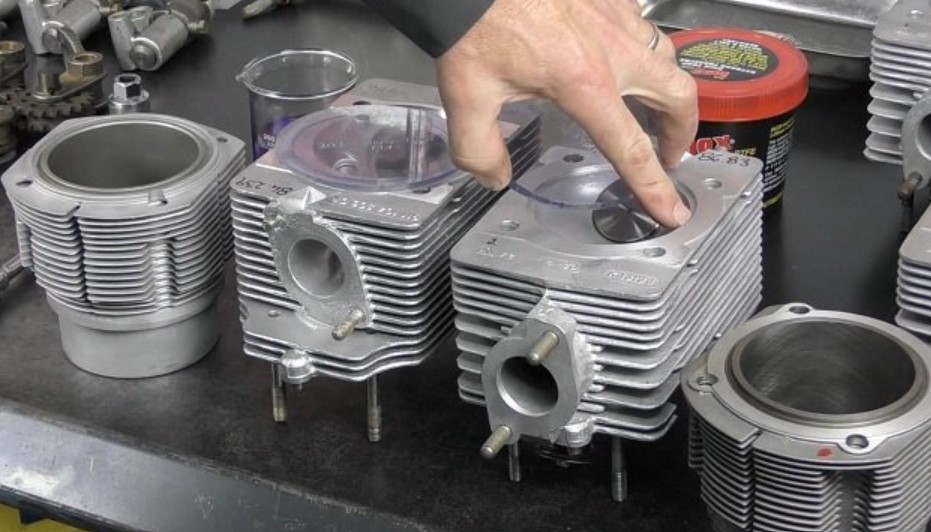
Role in Engine Tuning
Understanding the compression ratio is critical for fine-tuning engines, especially in high-performance vehicles. This section details how slight adjustments can lead to significant improvements in performance.
Practical Tips for Tuning
Offering practical tips and tricks, this part guides enthusiasts and professionals alike in fine-tuning their engines using compression ratio data for optimal performance.
Innovations and Future Trends
Latest Developments in Compression Technology
The automotive industry is constantly evolving. This section highlights the latest advancements in compression technology and how they are shaping the future of engine design and performance.
Predicting Future Trends
Looking ahead, we explore potential future trends in engine technology, focusing on how compression ratio measurements and applications might evolve.
How Do You Calculate Compression Ratio In Assembled Engine?
Calculating the compression ratio in an assembled engine involves a combination of direct measurements and mathematical calculations. This method requires precise measurements of various engine components and an understanding of the engine’s geometry.
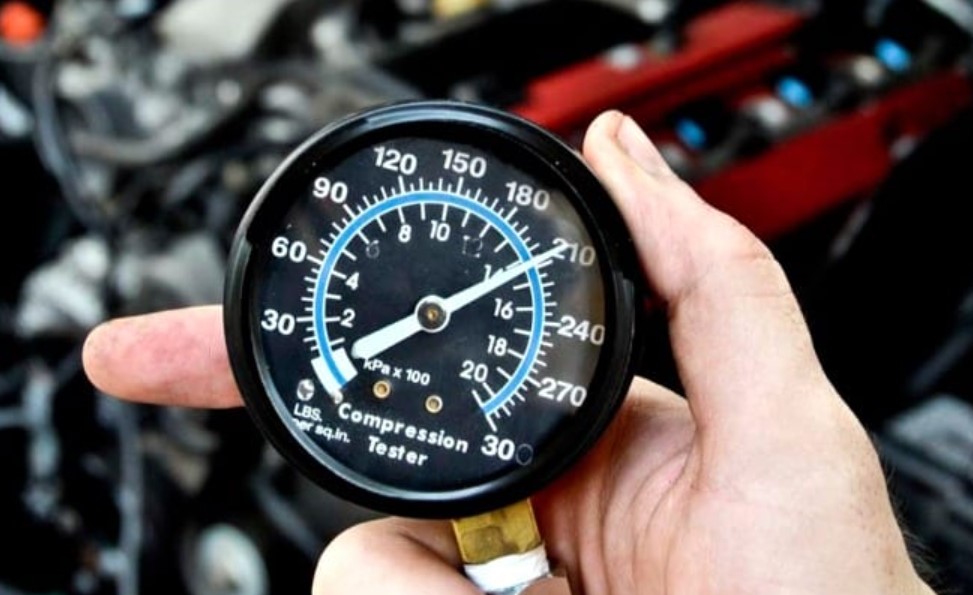
Step-by-Step Process:
- Measuring Cylinder Volume: Use a depth gauge to measure the cylinder’s bore and stroke. The volume of the cylinder is calculated using the formula: Volume = π × (Bore/2)² × Stroke.
- Determining Combustion Chamber Volume: This can be challenging in an assembled engine. One method is to refer to the manufacturer’s specifications. Alternatively, a technique called the fluid displacement method can be used, where a known quantity of fluid is used to fill the combustion chamber.
- Calculating Head Gasket Volume: The volume added by the head gasket is calculated using its thickness and the bore’s diameter.
- Piston Dome or Dish Volume: Pistons can have domes (positive volume) or dishes (negative volume) that affect the overall volume. This needs to be measured or obtained from manufacturer specs.
- Total Volume Calculation: Add the cylinder volume, head gasket volume, and combustion chamber volume, then adjust for the piston dome/dish volume.
- Compression Ratio Formula: The compression ratio is the total cylinder volume (at the bottom of the stroke) divided by the combustion chamber volume (at the top of the stroke).
How Do You Check Engine Compression Ratio?
Checking the engine compression ratio in a functioning engine involves both indirect and direct methods. While the calculation provides an estimated value, checking through diagnostic tools offers a more real-world figure.
Methods to Check Compression Ratio:
- Using a Compression Tester: This is the most direct method. The tester is screwed into the spark plug socket and the engine is cranked. The pressure gauge gives a reading in psi or bar, which can be compared to standard values to estimate the compression ratio.
- Cylinder Leak-down Test: This test measures the percentage of compression that is lost in each cylinder and can indicate if the compression ratio is within the desired range.
- Thermal Imaging Cameras: Advanced methods include using thermal imaging to analyze combustion efficiency, which indirectly relates to the compression ratio.
Interpretation of Results:
- Standard Compression Readings: Compare your readings to the standard values provided by the engine manufacturer. Deviations can indicate changes in the compression ratio.
- Leak-Down Test Results: Significant leaks in certain cylinders can skew the overall compression ratio, suggesting issues like valve leakage or piston ring wear.
How Do You Test The Compression Ratio Of A Cylinder?
Testing the compression ratio of a cylinder in an engine requires a methodical approach, primarily involving a compression test. This test is designed to measure the pressure within the cylinder when the piston is at its compression stroke’s peak. The results from this test give an indirect indication of the compression ratio.
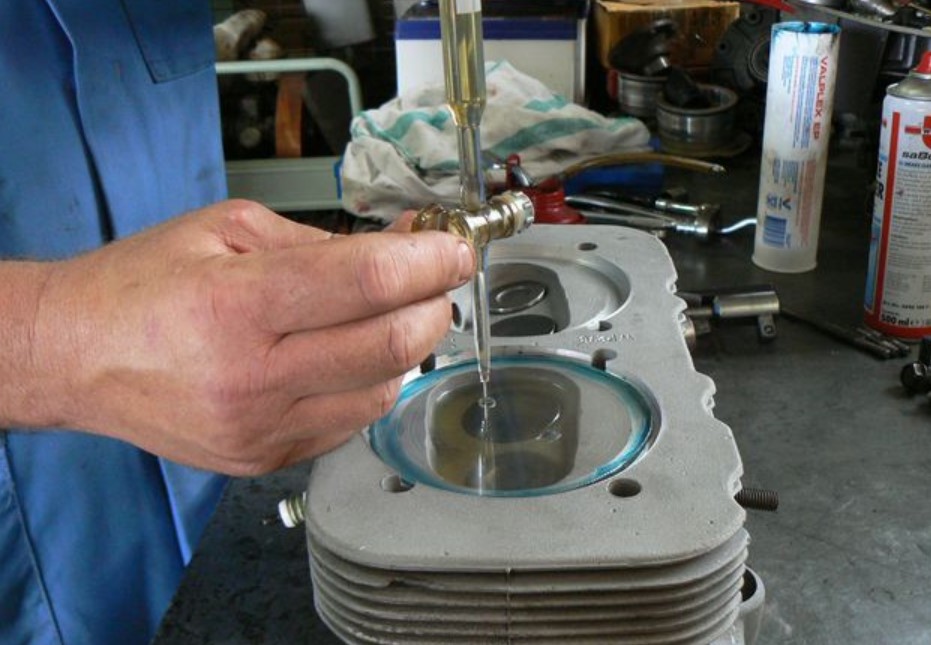
Steps to Test Cylinder Compression Ratio:
- Preparation: Ensure the engine is at operating temperature, as a cold engine can give inaccurate readings. Remove all spark plugs to prevent the engine from starting during the test.
- Compression Tester Setup: Attach a compression tester to the spark plug hole of the cylinder being tested. This tool is specifically designed for this purpose.
- Cranking the Engine: With the tester in place, crank the engine for a few seconds. This action compresses the air in the cylinder, and the tester records the maximum compression achieved.
- Reading the Gauge: The gauge will show a reading in psi or bar. This number indicates the pressure within the cylinder during the compression stroke.
- Interpreting Results: The reading is then compared with the manufacturer’s specifications for that engine model. A significant deviation from the expected value can indicate issues affecting the compression ratio.
What Is The Compression Ratio Of A 383 Stroker?
The 383 Stroker is a popular engine configuration, especially among Chevrolet small-block enthusiasts. Its compression ratio can vary based on the specific build and components used.
Factors Influencing the 383 Stroker’s Compression Ratio:
- Piston Design: The type of pistons used (flat-top, dome, or dish) significantly influences the compression ratio.
- Cylinder Head Configuration: The combustion chamber size in the cylinder heads affects the ratio. Aftermarket heads with different chamber sizes can alter the compression ratio from the stock configuration.
- Gasket Thickness: The head gasket’s thickness can also change the compression space, thus affecting the ratio.
- Stroker Kit Specifications: Different stroker kits may have varying specifications that influence the overall volume of the combustion chamber and cylinder.
Typical Compression Ratio Range:
- Stock Build: For a stock 383 Stroker, the compression ratio typically ranges from 9.0:1 to 9.5:1.
- Performance Builds: In performance builds, which may involve different heads or custom pistons, the compression ratio can be significantly higher, often ranging between 10.0:1 to 11.0:1 or more, depending on the build.
Conclusion
In conclusion, determining the compression ratio of an engine without disassembling it is not just a matter of convenience but also a necessity in many scenarios. It allows for better understanding and tuning of the engine, contributing to its optimal performance and longevity. This guide provides a comprehensive overview of the techniques and tools available for this task, emphasizing the importance of precision and careful analysis.
People Also Ask
How can understanding the compression ratio help in engine tuning?
Understanding the compression ratio is crucial in engine tuning, especially for performance vehicles. Adjusting the compression ratio can improve power output, efficiency, and response. However, it requires a thorough understanding of the engine’s limits and characteristics.
Can irregular compression ratios indicate engine problems?
Yes, irregular or unexpected compression ratios can signal engine issues. For example, a lower-than-expected ratio might indicate worn piston rings or valve problems, while a higher ratio might suggest carbon build-up in the combustion chamber.
How does the compression ratio affect fuel efficiency and emissions?
The compression ratio has a direct impact on fuel efficiency and emissions. Higher compression ratios typically lead to better fuel efficiency but may increase emissions. Balancing these factors is crucial for optimal engine performance and environmental compliance.
What role does engine simulation software play in determining compression ratio?
Engine simulation software can model the engine’s operations, including the compression cycle. By inputting the engine’s specifications, the software can provide a detailed analysis and accurate estimation of the compression ratio.
Are there any mathematical formulas to calculate the compression ratio?
Yes, there are formulas that use engine dimensions (like bore, stroke, head gasket thickness, and combustion chamber volume) to calculate the compression ratio. These calculations, though estimates, can be quite accurate if precise measurements are available.

Welcome to the exhilarating world of Matt Rex, a professional car racer turned renowned vehicle enthusiast. Immerse yourself in his captivating blog as he shares heart-pounding adventures, expert reviews, and valuable insights on cars, trucks, jets, and more. Fuel your passion for speed and discover the beauty of vehicles through Matt’s engaging stories and meticulous expertise. Join the ever-growing community of enthusiasts who find inspiration and expert advice in Matt Rex’s blog—a digital hub where the thrill of speed meets the pursuit of knowledge.




